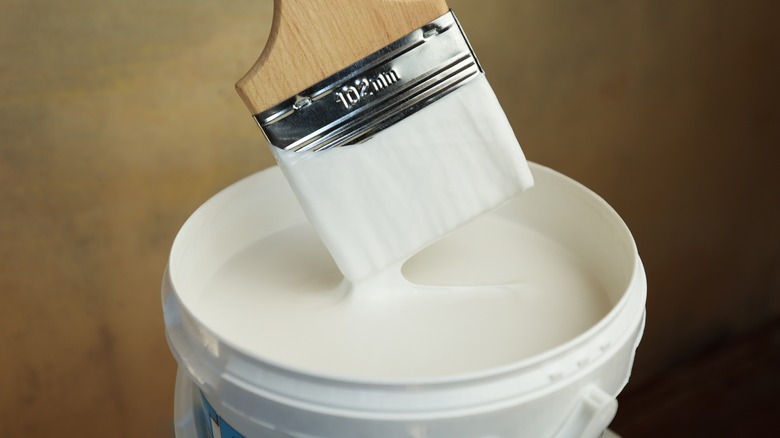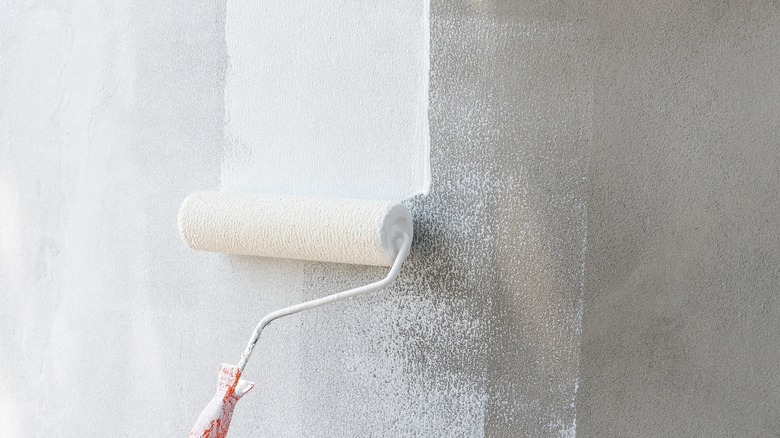The Color Primer You Should Use When Painting Dark Walls A Lighter Color
Painting is an easy way to re-decorate if you're on a budget. However, knowing what primer to use before painting a dark wall can be tricky, especially if you've never done it before. Is it better to use a primer that's gray, white, or something else? If this is your first time painting, then it's a question that can seem rather perplexing. While it may feel confusing, it turns out you should always use a very specific color when working with dark walls. The answer? White. Using a white primer in this instance is important, as it will help you to achieve the perfect finish. Without it, you may not be able to achieve the results that you were hoping for.
But what really makes it so much better compared to other primer colors? As it turns out, there is quite a notable distinction between them and it makes all the difference when transforming your space. So, what's the big secret?
White primer works better when transitioning to light colors
If you're working with white primer and dark walls, the most notable difference is its effect on a finished wall. Using a white primer sets a light base and allows lighter colors — such as white or yellow — to work their magic and look their best without any darker tones interfering. On the other hand, darker primers will have the opposite effect, meaning that you'll have to work twice as hard to see the results you want when transitioning from dark to light walls. By sticking to white primer, you'll be making the whole process much easier on yourself and your walls.
If you want to ensure you do a good job when painting your dark walls a lighter color, you should always make sure that you do your research when it comes to primers. Look for a primer that holds stain-blocking abilities. This will make the transition from a dark to a light wall much smoother. Not only that, but a light color can also "[help] to brighten up a room that doesn't get a lot of natural light," explains color and design expert Nivara Xaykao to Benjamin Moore. If you're unsure what's best, you should always ask for a professional opinion at a local store or talk with someone you know personally.
However, that's not all. If you want to get the best results with your primer, you also need to pay attention during the process of applying it.
Pay attention to the underlying color when applying primer
While switching up wall colors can be exciting, you need to be diligent when working with primers. After you finish applying your white primer to your wall, you should pay attention to the wall color. The color should help indicate if your primer has done a good job. To assess the situation, make sure that you keep an eye out and look for any darker hues on your wall. If you can still see any darker areas through your white primer, it could indicate that you need more primer. This may be more common the darker the color is. For example, if you're working with black walls, it may be more noticeable than light grey.
Although it may be frustrating, keeping your eyes peeled is essential if you want to achieve a perfect light finish on your walls. However, if you stick to using a white primer and use it correctly, then the transition should be fairly straightforward. Using paint without primer is possible, but it can leave you with an undesirable finish; hence why the market worth of the product surpassed over $22 billion in 2022, per Emergen Research.
Now, it's time to take the plunge and transform your walls!


